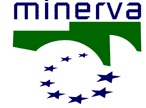
|
|
|
|
|
|
|
|
|
 |
Path: Home » Publications » Handbook on cultural web user interaction »
Table of contents » Chapter 4 » Chapter 4.1
|
| |
Handbook on cultural web user interaction
|
4.1 Why use metadata for describing websites?The reading of this chapter, which presupposes a basic ICT knowledge, is nevertheless suggested to cultural heritage professionals, in consideration of the increasing importance of metadata issues in cultural web world. The practical application of this chapter’s contents is devoted to ICT professionals. MINERVA‘s seventh principle of quality states: “A good quality cultural website must be committed to being interoperable within cultural networks to enable users to easily locate the content and services that meet their needs”. In order to guarantee interoperability between systems, metadata must be correctly compiled. According to the MINERVA Technical Guidelines for Digital Cultural Content Creation Programmes “Metadata can be defined literally as ‘data about data,’ but the term is normally understood to mean structured data about resources that can be used to help support a wide range of operations on those resources. If a web application is created using certain standards this will facilitate interaction and interoperability with other web sites and with other on-line bodies (search engines, portals). A resource may be anything that has its own identity, and a resource may be digital or non-digital. Operations on digital resources might include, for example, disclosure and discovery, resource management (including rights management) and long-term preservation. For a single resource different metadata may be required to support these different functions”1. The daily work of the search engines spiders consists in searching and indexing metadata on the web pages that they visit. Our use of common search engines uses metadata to identify resources formed from web pages. Unfortunately the metadata managed by search engines is limited or not structured, as a result we often receive search results that have nothing to do with our search. If, for example, we want to make a search in the web for the MINERVA project and we just enter “MINERVA” in the search string of Google, we will see that the result that interest us does not appear within the first six results [research effected the 20 May 2008]. If however the information published on the web has been “classified” in a more or less structured manner, the search can be made more effective. 1DCMI Metadata Terms, http://dublincore.org/documents/dcmi-terms/; Diane Hillmann, Using Dublin Core, http://dublincore.org/documents/usageguide/; DCMI, Expressing Dublin Core in HTML/XHTML meta and link elements, http://dublincore.org/documents/dcq-html/; M. Moffat, ‘Marketing’ with Metadata: How Metadata Can Increase Exposure and Visibility of Online Content, Version 1.0 8th March 2006, http://www.icbl.hw.ac.uk/perx/advocacy/exposingmetadata.htm. |
|
|
|
|
Copyright Minerva Project 2008-09,
last revision 2008-09-19, edited by Minerva
Editorial Board. | |